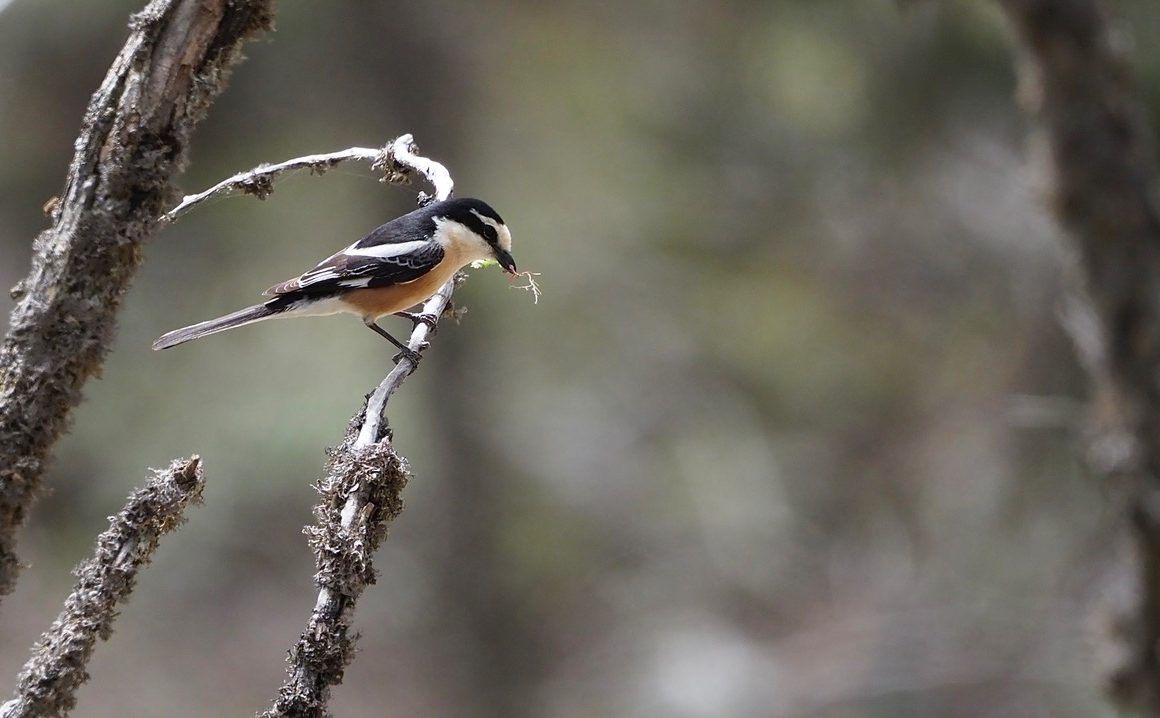
I’ve been a regular visitor to the island of Cyprus for over 25 years, making around a dozen trips during this period, every one in search of birds. Tucked away at the extreme eastern end of the Mediterranean, Cyprus is regarded politically as part of Europe, but when it comes to birds it’s very much Middle Eastern in flavour, with a number of species that are hard or even impossible to find in Europe, plus a trio of endemics.
I made my most recent visit earlier this month, arriving with my three birding companions, Martin, Mike and Chris, on a warm spring evening. It was dark when we reached our accommodation in the hillside village of Pachna, where we were greeted by a duet of Scops Owls. According to the taxonomists, these weren’t regular Scops Owls (Otus scops) but the endemic Cyprus Scops Owl (Otus cyprius). This is a recent split, for when I last visited Cyprus in 2018 the two were considered conspecific. Like all Scops Owls, though, these birds proved elusive and difficult to see. Despite hearing them every night, only Mike managed a brief glimpse.
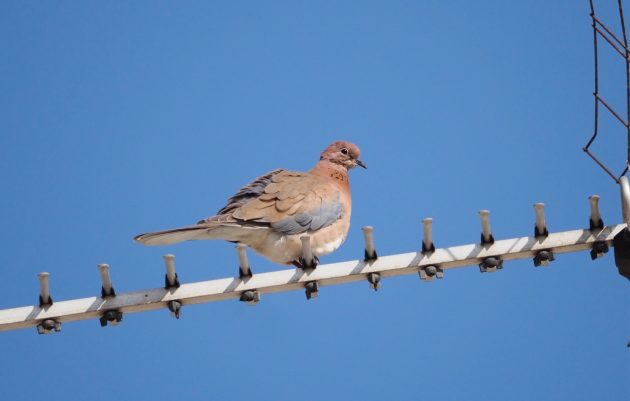
Laughing Dove: now a common resident on Cyprus. They like to perch on TV aerials
I woke before sunrise on my first morning to the happy chattering of Swallows not far from my bedroom window. They were accompanied by the monotonous cooing of the inevitable Collared Doves, and another bird that I’d never heard in Cyprus before: a Laughing Dove. Anyone who has enjoyed a safari in East Africa will be familiar with the pleasing song of the Laughing Dove, which is the background soundtrack to every day spent in the bush. It was strange to hear it here in Cyprus. First recorded breeding on the island in 2013, this dove is now both widespread and common. Though it has spread naturally, Anders Gray from BirdLife Cyprus told me that it’s numbers had been boosted by releases of captive-bred birds by hunters. It’s now on the official quarry list on the island. We found it almost everywhere we went, but it’s typically an urban bird, and not one you find far out in the countryside.
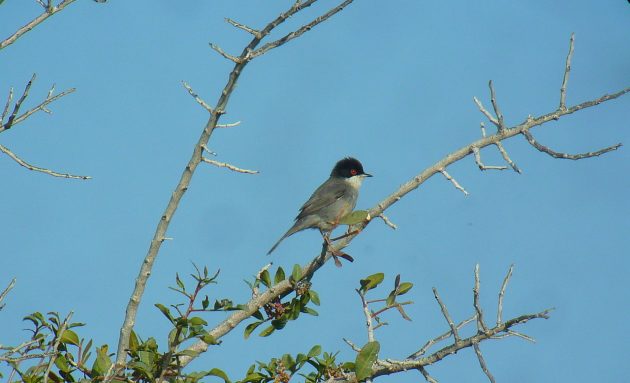
Sardinian Warblers are one of the most common breeding birds on Cyprus, though they only bred for the first time in the 1980s
On my first visit to Cyprus, back in the mid 90s, I regarded myself as lucky to find a Sardinian Warbler, as this species only bred on the island for the first time in the 1980s. Now it’s everywhere, for it has become one of the commonest of Cypriot birds. Unfortunately this has come at a cost, for it has ousted the endemic Cyprus Warbler, which is now a hard bird to find. Physically the two are very similar, but the Cyprus is slightly smaller and so is out-competed by the dominant Sardinian. When you come across a male Cyprus Warbler there’s no mistaking it, for it’s the only Sylvia warbler with a dark spotted underside. We checked out numerous Sardinian Warblers before we finally found our bird (below).
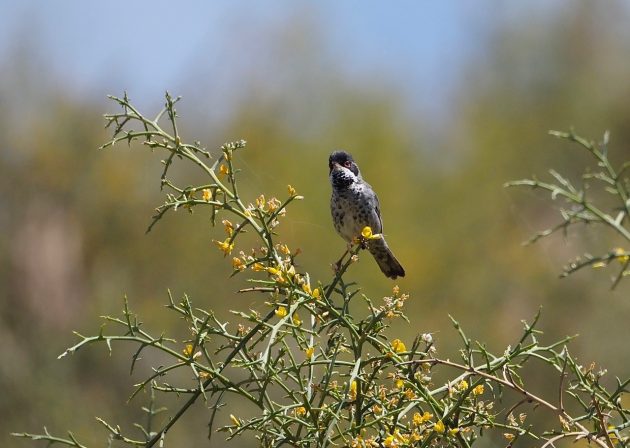
Cyprus Warbler, now a hard-to-find endemic. Note the spotted underside.
In contrast to the warbler the Cyprus Wheatear is one of the easiest birds to find in spring, for they are found everywhere, from pine woods and vineyards to the middle of villages. Once considered a distinct race of the more widespread Pied Wheatear, it is now regarded as a full species in its own right. Despite being common and relatively approachable, it’s one of those birds that are remarkably difficult to photograph. The song is highly distinctive. The Collins Bird Guide describes it as “a series of similar cracked hoarse notes, ‘bizz-bizz-bizz-bizz-bizz…’” I couldn’t put it better myself.
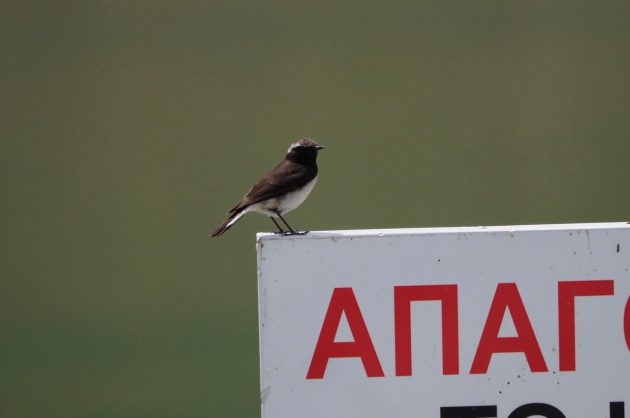
Cyprus Wheatears are the easiest to find of the three endemic birds that occur on Cyprus
Black Francolins once bred in Portugal, Spain and Italy, all countries from which this handsome little game bird has long been lost. They still remain widespread and relatively common on Cyprus, and the male’s far-carrying territorial call is one of the most characteristic sounds of Cyprus in spring. Persistently repeated, it always sounds to me like a toy trumpet. Francolins like to call from a prominent perch, such as a low bush (below), but if they think they have been spotted they quickly disappear from view, so they can be frustratingly elusive.
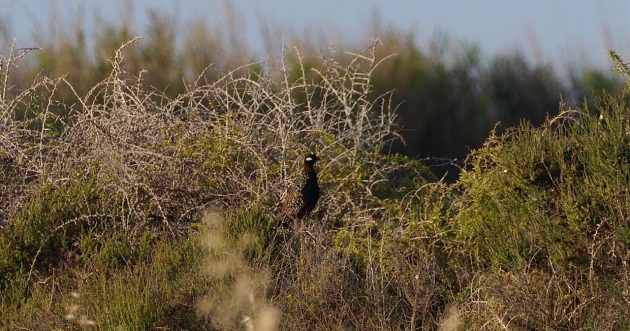
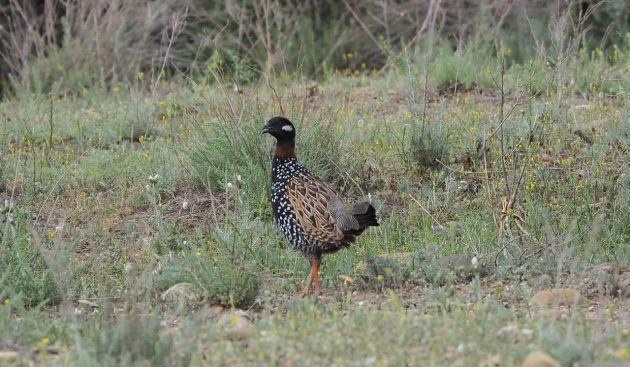
Black Francolins are more often heard than seen
When I first visited Cyprus, Spur-winged Lapwings were rare and hard to find. Today they are a Cypriot success story, for they have established themselves at many locations, and even breed in the middle of roundabouts in the bustling town of Larnaka. It’s not hard to work out why they have been so successful, for they are extremely aggressive to anything that dares approach their nests, chasing of passing Wood Sandpipers and even Yellow Wagtails with the same enthusiasm as they do Hooded Crows. They are noisy birds, and impossible to overlook.
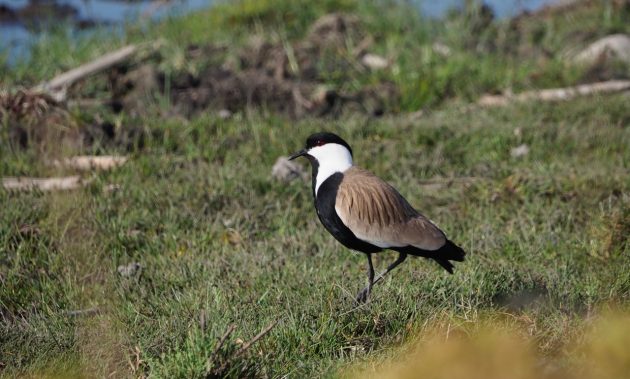
Now a common breeding bird on the island: Spurwinged Lapwing
For many visiting birders, Eleonora’s Falcons are one of the biggest draws. Cyprus holds the most easterly colonies of this handsome raptor, and they are most easily seen on Kensington Cliffs, near Episkopi. The first birds return from their wintering grounds in Madagascar in mid April, so the birds we saw had only just arrived. They are very late breeders, as they feed their young on autumn migrants which they generally intercept out to sea. One September I watched a pack of seven Eleonora’s hunting a juvenile Swift. Despite its speed, the Swift didn’t stand a chance, for these falcons are deadly hunters. They remain on the island well into October, with a few lingering into November.
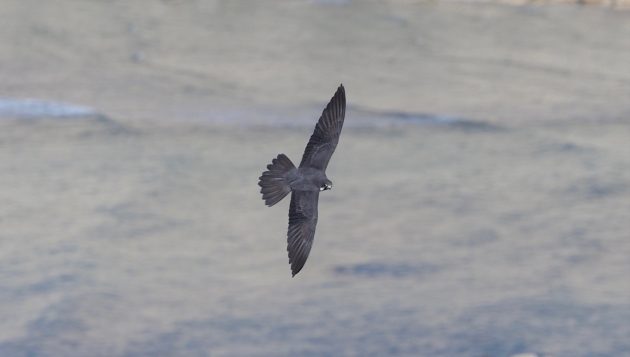
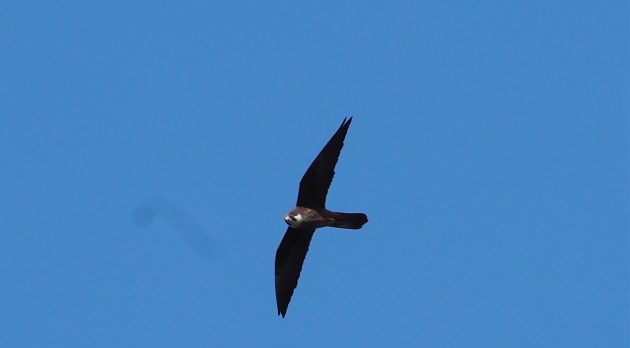
Cyprus has the most easterly colonies of Eleonora’s Falcons in the world
Apart from the Kingfisher we don’t have any brightly coloured breeding birds in Britain, so it’s always a treat to see birds such as Bee-eaters, Hoopoes and Rollers (pictured below). Rollers are widespread, and a bird you often see when driving, sitting on roadside telegraph wires. Hoopoes are common breeding birds. Bee-eaters also nest, but most of the birds seen on the island are passage migrants. We saw our first birds on 17 April: numbers of migrating birds peak at the end of April.
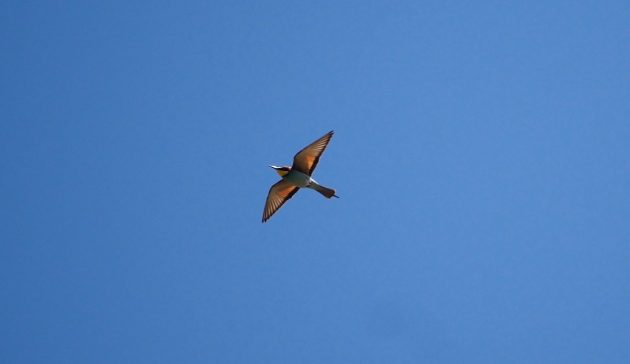
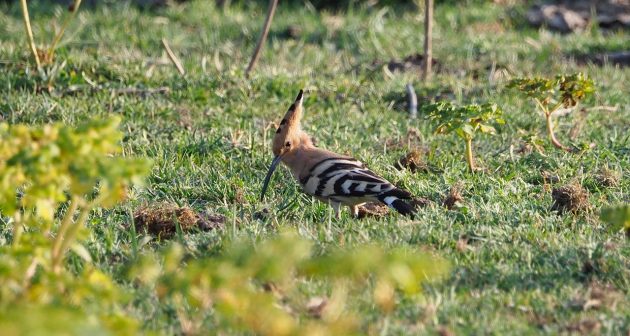
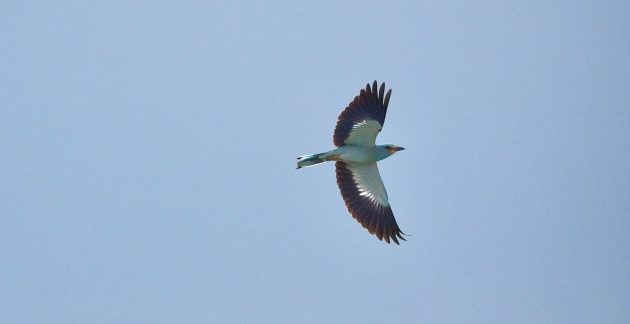
Like Bee-eaters, most of the shrikes are late migrants, though Masked Shrikes are an exception to the late-arrival rule by returning in March. We found them easily in the pine woods of the Troodos mountains. These smart little birds – the smallest and daintiest of the European shrikes – nest on the island. So too do Woodchat Shrikes, while Red-backed are only occasional breeders. Lesser Grey Shrikes are regular migrants, but are seldom seen before the last week of April. We missed them, but there were plenty of other compensations, as I will reveal next week.
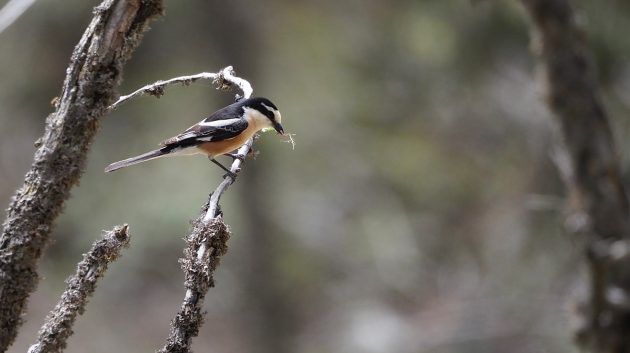
Masked Shrike: these dainty shrikes are widespread breeders on Cyprus, returning in mid March







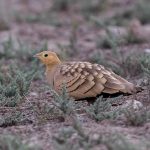





Cyprus is on my wishlist!
Have you tried the “Birds of Cyprus” Helm guide (https://www.10000birds.com/birds-of-cyprus-field-guide-review.htm)?